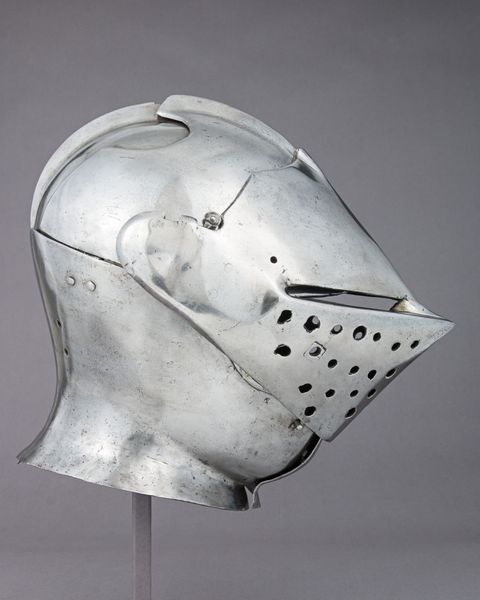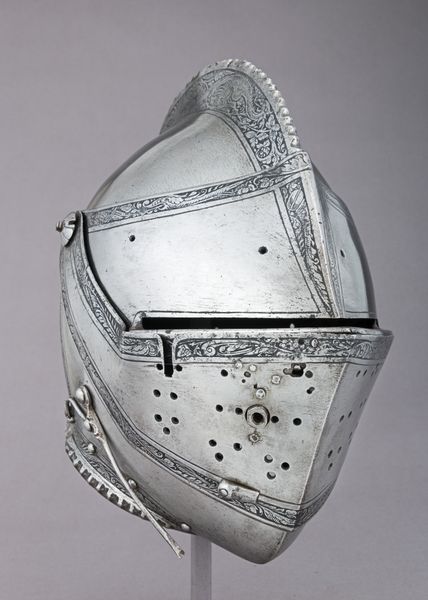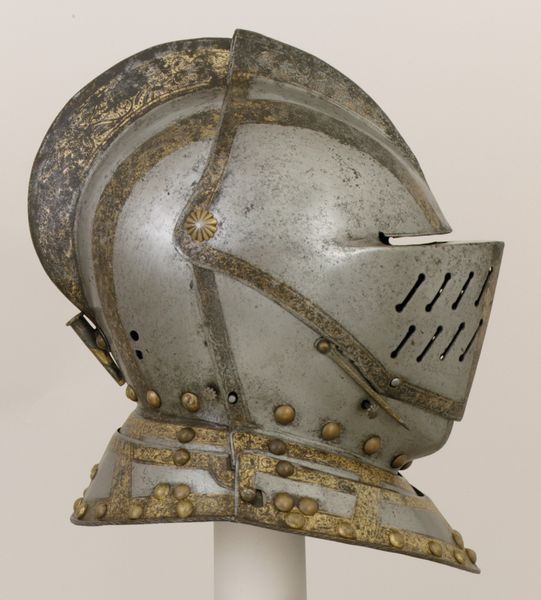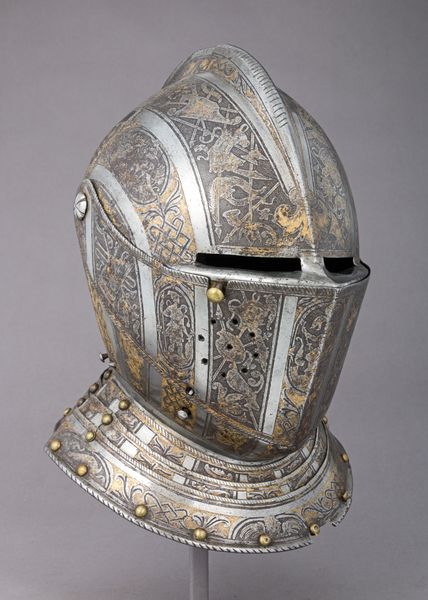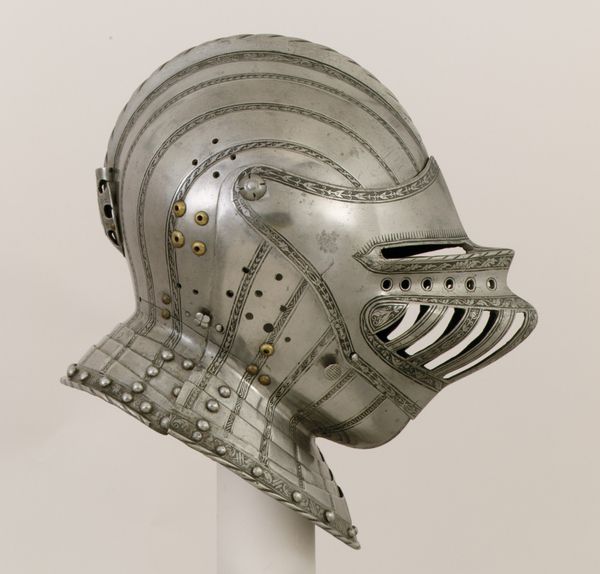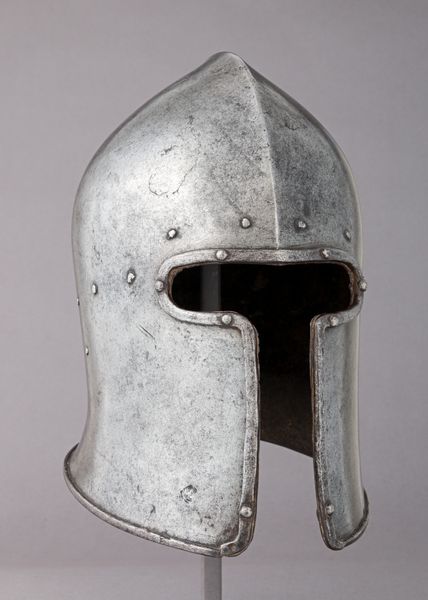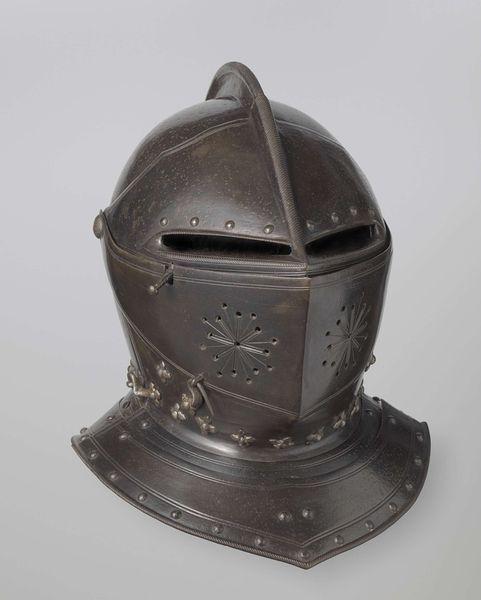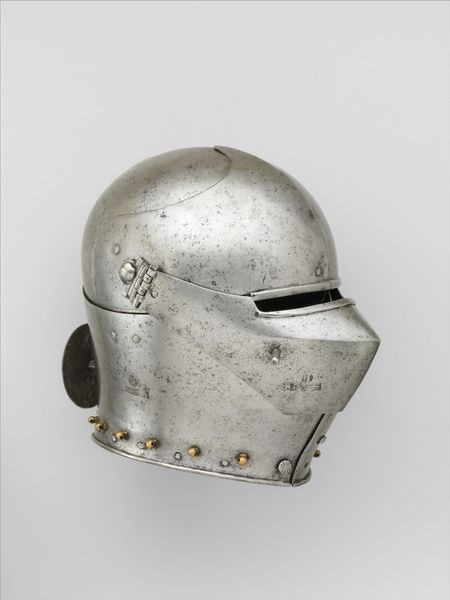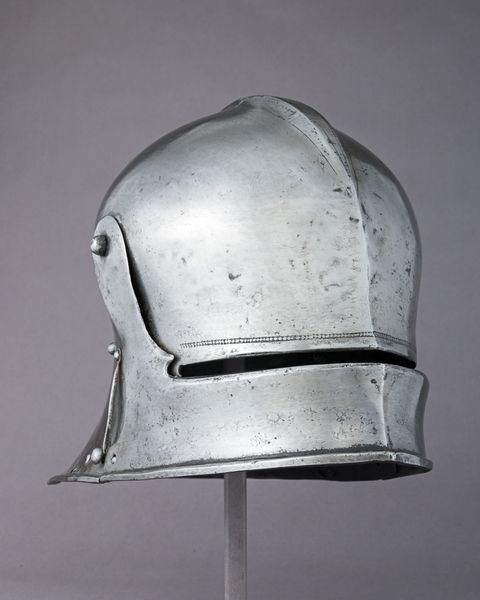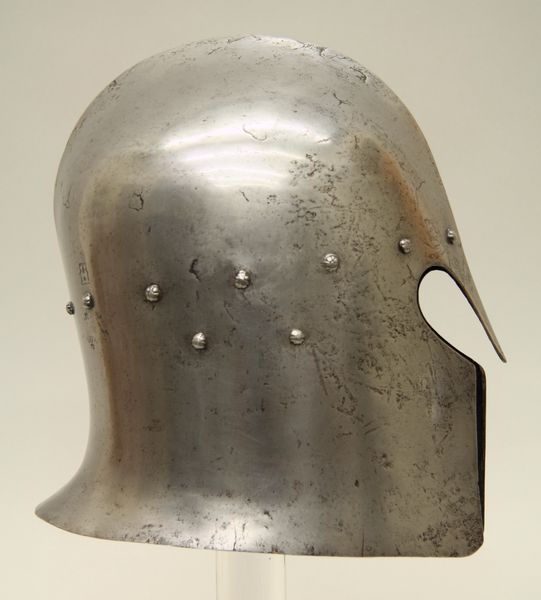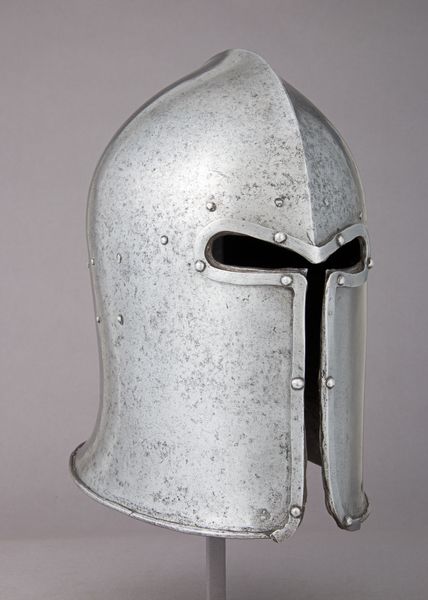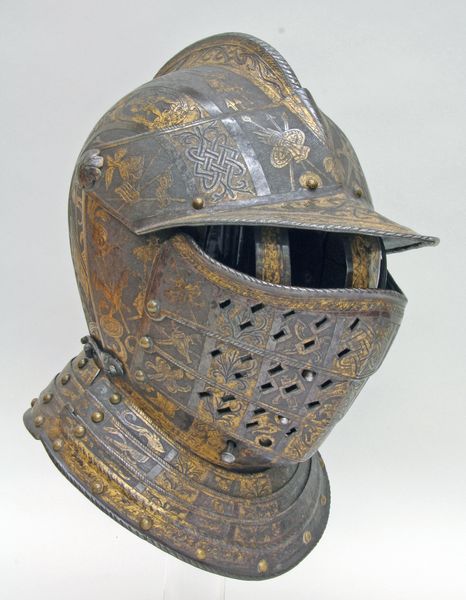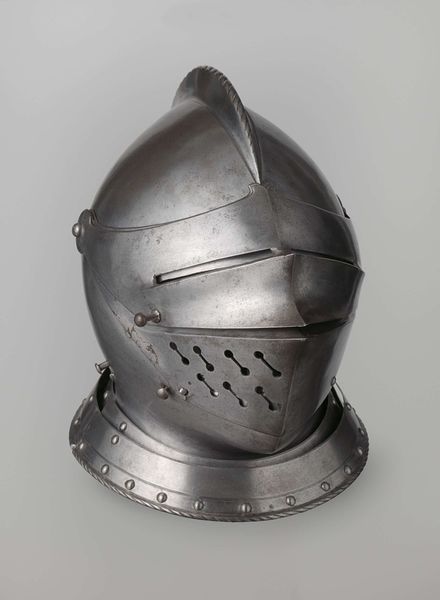
metal, sculpture
#
medieval
#
metal
#
sculpture
#
sculptural image
#
sculpture
#
armor
#
statue
Dimensions: H. 11 7/8 in. (30.2 cm); W. 8 1/8 in. (20.6 cm); D. 12 in. (30.5 cm); Wt. 4 lb. 15 oz. (2251 g)
Copyright: Public Domain
Editor: We're looking at a burgonet, a helmet crafted from metal, dating from 1515 to 1932. It’s part of the Metropolitan Museum of Art's collection. I'm struck by its imposing shape and the cool detachment it seems to exude. What aspects of this work do you find most compelling? Curator: What immediately captures my attention is the violence inherent in its very design, softened only by its presentation as a work of art within museum walls. Consider the implications of the wearer – the power dynamics at play, the historical context of conflict and domination embedded within the object itself. Does it inspire questions about whose heads this protected, and against whom? Editor: Definitely. It makes me think about who had access to this kind of craftsmanship. What was the socio-economic context around the production of such elaborate armor? Curator: Precisely! It represents not just personal protection, but a larger social order. Who were the artisans who made it? What were their lives like, and how were they complicit in the power structures of their time? We need to remember that this wasn't just about protection; it was also about display, projecting an image of strength and invincibility, very gendered too. Editor: I hadn’t thought about the makers so much. It’s easy to focus on the visual impact, to consider only those who would have worn it, but your approach reminds us to think about the whole web of relations that this object represents. Curator: Exactly. When viewing historical art like this, we must critique how power, labor, and identity were – and continue to be – shaped through these material objects. These weren’t passive forms of protection, but active tools of assertion and control. Editor: That completely changes how I see it. I initially reacted to it aesthetically but understanding the socio-political implications of something as seemingly simple as a helmet helps me reframe my appreciation of art and the deep cultural context that creates them. Curator: I agree. Approaching historical art using interdisciplinary frameworks allows for a richer and more critical understanding of historical dynamics and helps promote equity and incite action.
Comments
No comments
Be the first to comment and join the conversation on the ultimate creative platform.
